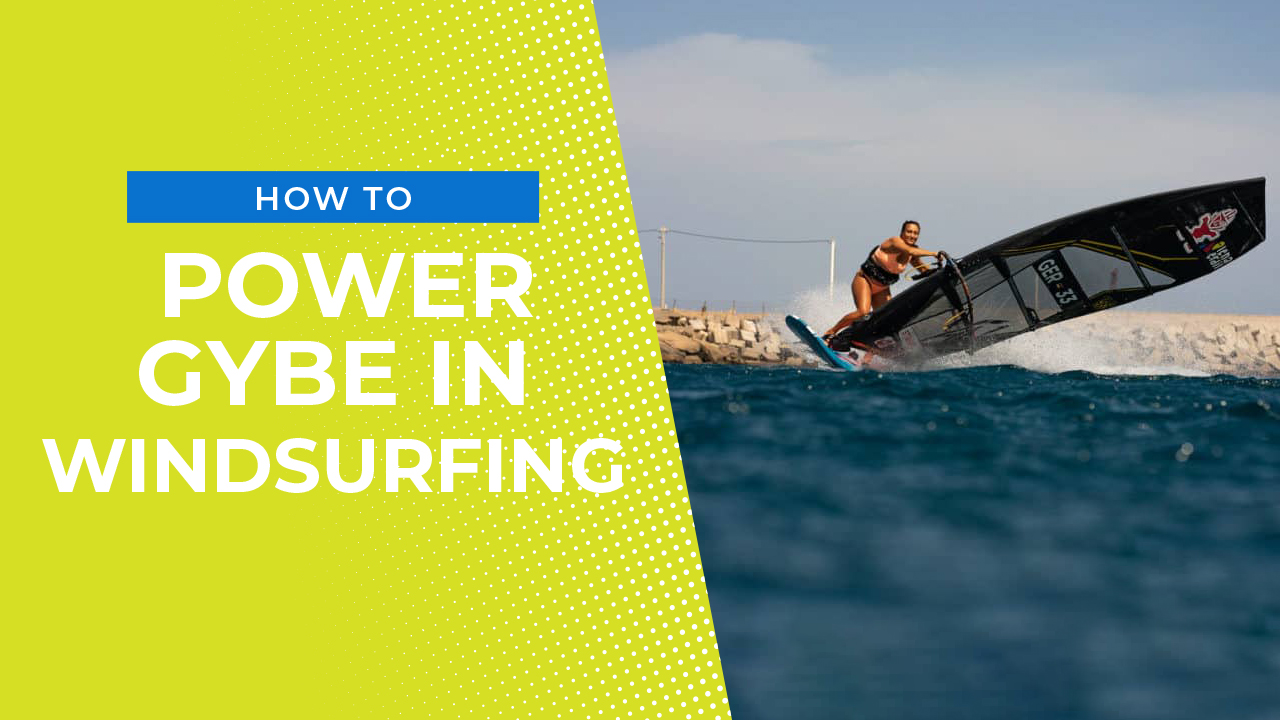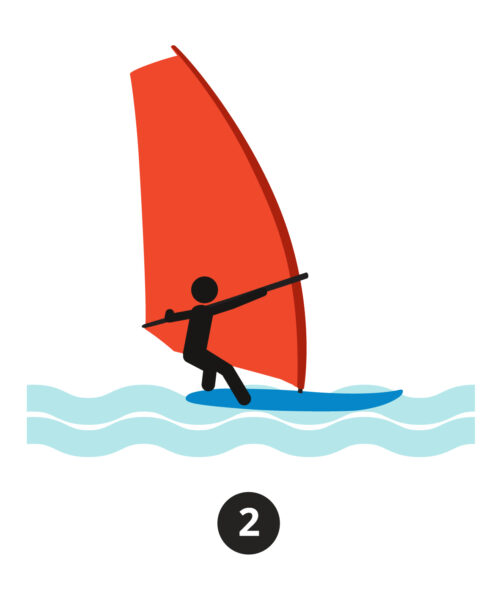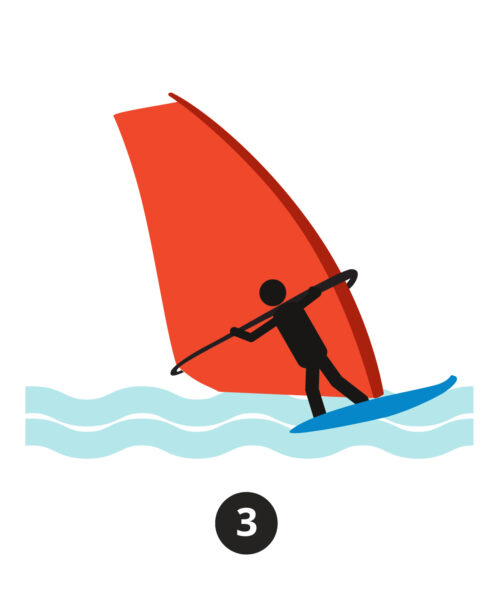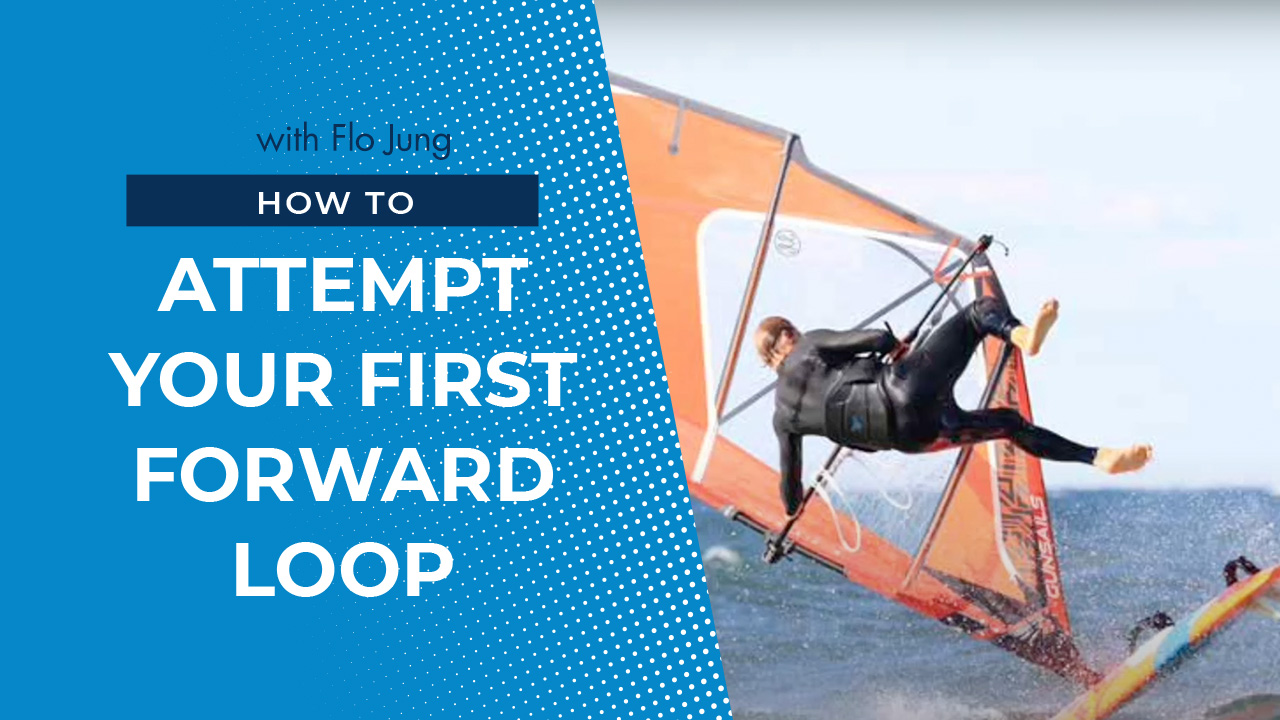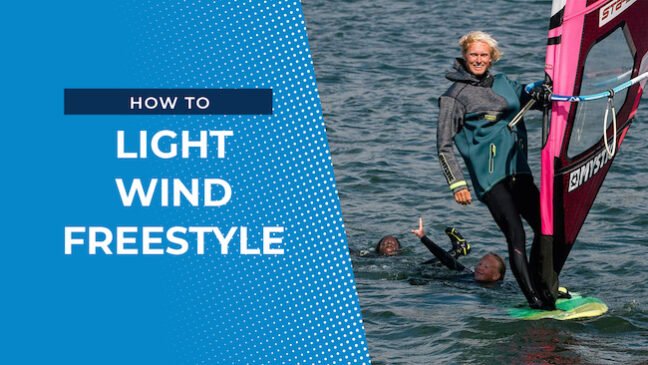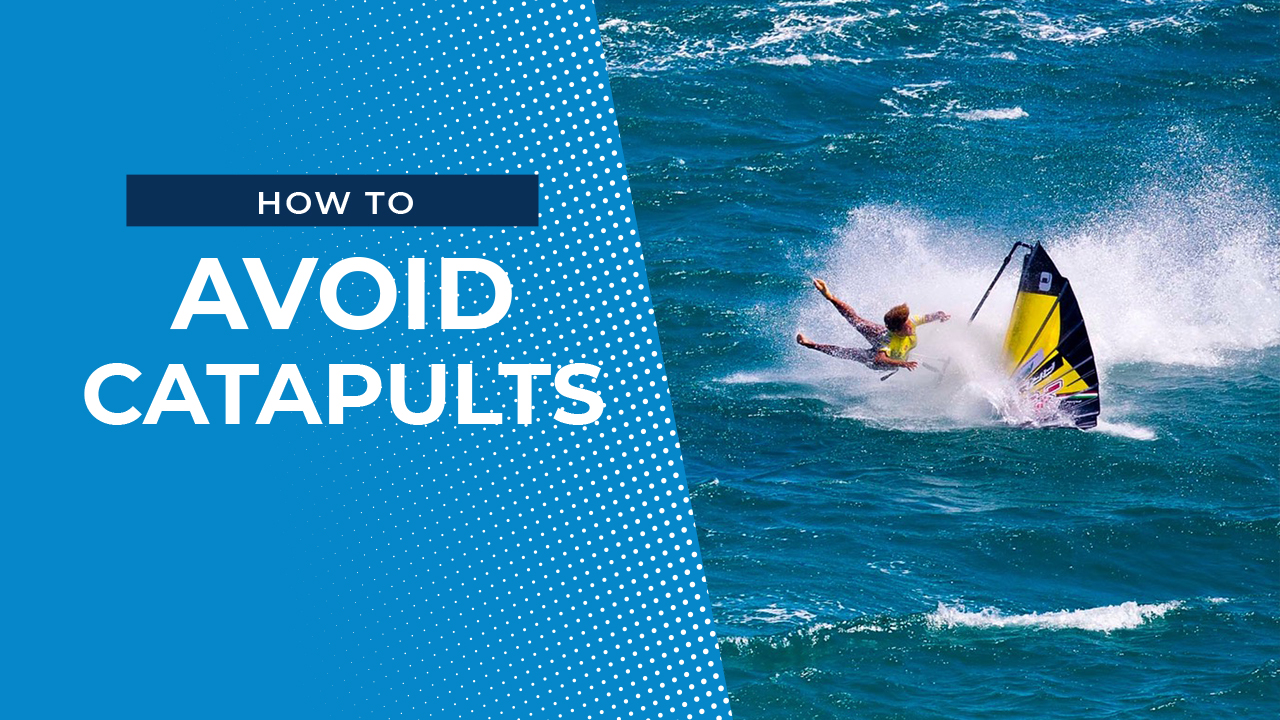How to Gybe is probably the most known subject to talk about at a windsurfing beach. A gybe is a turn you do downwind, and is a skill you must learn in windsurfing if you want to keep your hair dry! The better you get, the better the gybe! A goal for any windsurfer is to master the planing power gybe. And once you do that you can challenge yourself with laying it down and putting more style and power into it!
Steps to do a power gybe in windsurfing:
- Sail slightly downwind and unhook the harness
- Move your backhand back on the boom and move your back foot out of the backstrap
- Look where you are going. Keep this position until the nose of the board is pointing downwind
- Switch your feet so that your front foot becomes your back foot and your back foot becomes your new front foot
- Slide your front hand closer to the mast. Let go with your backhand and the sail will flip itself
- Grasp the boom on the new side
Check out a perfect gybe by Nico Prien:
https://www.facebook.com/watch/?v=10158785128835353
WORK ON YOUR WINDSURF GYBES
From beginner to professional we all have to work on our gybes. The top riders in the PWA slalom world cup are also working every day on their gybes. A good gybe in a race during a crucial moment can be the reason if you win or lose. On a freeride level we all have to admit, seeing a perfect gybe is just super impressive! So let’s get down to business and break this famous maneuver down. In the infographic below you can see step by step: How to power gybe in windsurfing.
Step 1: Sail slightly downwind and unhook the harness
Prepare yourself to gybe. A quick tip for the power gybe would be to sail as fast as possible. The faster you sail, the lighter the sail will feel. So to get that speed you can start to sail slightly downwind and hook out of the harness.
Step 2: Move your backhand back on the boom and move your back foot out of the backstrap. Keep the knees bent!
This is the time to commit and start your turn. For more sail control it helps a lot to slide your backhand further back on the boom. The stronger the wind, the more important it is. When you move your back foot out of the backstrap, place that foot closer to the downwind rail. How far you will place the foot depends on the width of your board. Imagine you will turn on a surfboard or a snowboard that does not have a boom to hold on to. Here you can only turn using your body weight. So make sure you lean forward over your bent knees. This will help your sail also get into a nice forward position.
Step 3: Look where you are going. Keep this position until the nose of the board is pointing downwind
Be patient and wait till the board has turned enough downwind. For balance it’s important to bend your knees and keep pressure on the boom and your foot. Keeping pressure on the boom sends the power from your body down to the mast base through the boom and the mast, and the downwind foot will help you dig the rail into the water for a nice carve.
Step 4: The wind will be blowing directly from behind. This is the time to switch your feet so that your front foot becomes your back foot and your back foot becomes your new front foot.
There are different ways of flipping the sail and switching the feet. Some sailors even flip the sail before they have done the footwork, but for more control, it’s better to change your feet before flipping the sail. Especially in slalom racing, as you want to be in full balance and ready to flip the cambers and maybe start pumping right after the sail has flipped. That would not be as balanced if you are in a switch stance position. So make it easy for yourself: do the footwork right before handling the sail flip. During the foot change, look out of the turn, so remember to always «look where you want to sail». One of the most common mistakes is to look down at your feet and look at your hands. Remember to remind yourself that you need to look forward in the direction you are going. There is no need to look at the hands, as you know where they are – the same goes for your the feet.
Step 5: Slide your front hand closer to the mast. Let go with your backhand and the sail will flip itself
Before you flip the sail make sure you slide your front arm closer to the boom head in the direction where the mast is. That will help you flip the sail without too much power in the sail. This makes it also easier to adjust when you should flip the sail to be able to keep plaining out of the gybe.
Step 6: Grasp the boom on the new side
Time to get into the new direction after flipping the sail. It’s important to drop your weight and get low so the sail won’t be able to pull you off the board. Being low and put weight on your back foot will also help you to quickly slide the new front foot into the front strap and keep the speed out of the turn. It’s time to get into the harness and slide your back foot into the strap and off you go!
Pro Tip: Spot Your Mistakes – Analyze Your Tries
Performing a perfect gybe takes practice! And different conditions can make the maneuver harder. Blasting on flat water is easier than in choppy and wavy conditions. But with the right technique and enough training, anything is possible! If you feel that you are struggling with some of the steps it can be helpful to find out where the main problem is. Below is a map with examples of what can possibly be the mistakes. Go through it and find out where you struggle and work on that. As an example, if you stop right after the gybe find out if you initiate the gybe while still going upwind. If you do that, sail back and try to start more downwind on your next try. Maybe you start the gybe before you have enough speed, maybe you are spending too much time switching your feet. There are a lot of things that can be the reason why you don’t plane out of the gybe. What can also help a lot is to film your tries and look at it in slow motion. Break it down into steps and see where you can improve.

